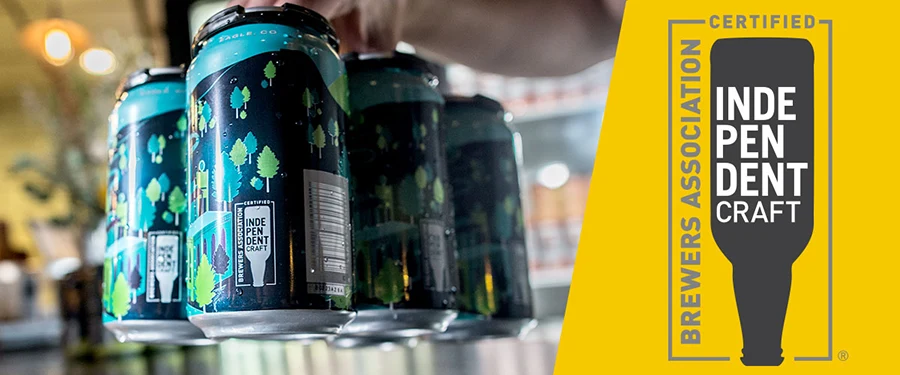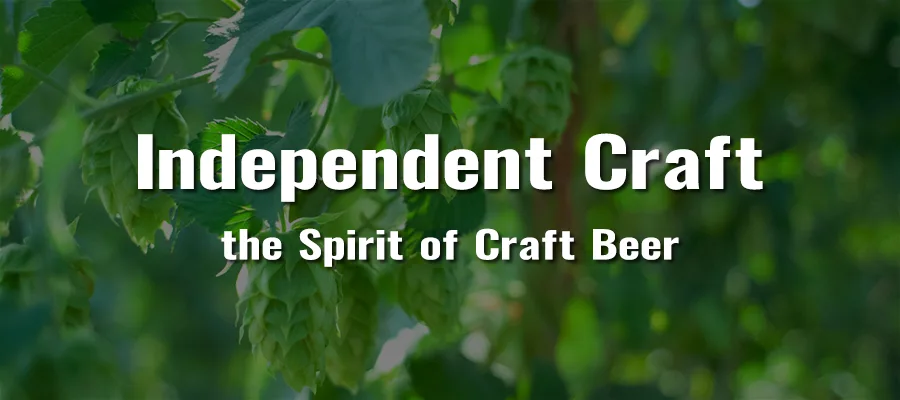Craft beer is regarded by many as one of the special pleasures in life. The updated content of the wine list in the restaurant, the new selection of daily celebrations, the food photos in social software… If you pay attention, you will find that this kind of taste is unique The niche beverages are increasingly appearing in our field of vision. Today, craft beer is cherished by millions of people who see it not just as a fermented beverage, but as something to be shared, respected, and enjoyed in moderation.
Craft beers have a richer, more distinct taste compared to mass-produced industrial lagers. During the brewing process, brewers need to spend the necessary time and effort to maintain or improve the quality of the beer, rather than focusing on large-scale marketing campaigns. It is always a treat to taste craft beer. Rich taste and each beer bottle showcases the creativity and passion of its maker. “Craft beer” is more of an art than a type of beer.
Craft beer is the intersection of art and science. Divided into ale and lager in terms of brewing process, the difference between the two techniques leads each brewer to decide whether to brew beer according to a specific style, or to blaze a new path and break the mould of traditional style.
1. What Is a Independent Craft?
Craft beer, called “Independent Craft”, is a cultural struggle. The object of the struggle is the “large-scale industrial beer group” with industrialized and large-scale production.
For many, beer is more than just what’s in a bottle. We can always smell the meaning of “quality”, “niche” and “exquisite”,And the people who brew it and own the brewery play a vital role.
In 2005, the association of brewers and the brewers’ association of america merge to form the brewers association. “independent”, “Quality” and “Small” are exactly what the Brewers Association (BA) defines as craft beer.
BA’s definition of a craft beer producer:
- Small: Annual production of 6 million barrels of beer or less (approximately 3 percent of U.S. annual sales). Beer production is attributed to a brewer according to rules of alternating proprietorships.
- Independent: Less than 25 percent of the craft brewery is owned or controlled (or equivalent economic interest) by a beverage alcohol industry member that is not itself a craft brewer.
- Tradition: Has a TTB Brewer’s Notice and makes beer. The flavor of most beers brewed by brewers should be derived from traditional or innovative raw materials and fermentation processes.
This has a clear definition of craft beer, which strongly guarantees that the quality of “craft beer” is the first, and the quality cannot be reduced due to factors such as production, equity and craftsmanship.

How the certified independent craft seal looks on beer cans.
Encourage Independent Brewery
In 2017, the independent craft brewer seal makes its debut. The mark aims to promote beer made by small and independent craft brewers.
The independent craft brewer seal was launched by the BA on June 27, 2017, as a tool to minimize confusion in the marketplace and clearly identify beers from small and independent U.S. breweries. Today, more than 4,000 craft brewing companies have adopted the seal, representing more than 85 percent of the volume of craft beer brewed.
Small independent American craft breweries have been upending the beer world for years. Their ability to take risks, innovate tastes and build better communities. To proudly display this independent spirit, the Brewers Association has created a symbol to unify American craft breweries and those who want to support them. The certification mark provides beer lovers an easy way to identify independent craft beers.
2. The Independent Art
The keywords for craft beer are: “diverse”, “local”, “small”, “independent”.
Everyone will not feel the same about craft beer, niche, mysterious or special, pure. It is precisely because of this that craft brewing has become popular.
If you get a chance to approach a large commercial brewery, you will be impressed by the professional equipment and technology it has. It’s not that the brewer of industrial beer can’t make the beer he wants to make, but that under the constraints of the brewery, it can only be produced according to a standardized process.
Craft beer is the exact opposite. Craft beer with an “independent spirit” is based on hops, malt, yeast and water. It adopts the “upper fermentation” process to fully ferment, and adds fruits, spices or herbs and other additives, which can produce hundreds of flavor combinations. Every craft brewer is like a beer artist, constantly crossing between tradition and innovation, constantly bringing us waves of surprises.
In this time of pursuit of individuality, people often focus on quality rather than brand, and the ever-changing craft beer just meets the needs of modern young people. If you want to taste different crafts in different styles, we recommends that you start by pouring into a glass.
3. Independence and Prosperity of Craft Beer
The prosperity of craft beer in the United States today is obvious to all. This is not only data representing market share and sales growth, but also the diversification of products and consumer goods themselves.
The prosperity and independence of the American beer industry are closely related.
On the one hand, various associations, forums, media, and platforms are striving for independent space and the education market. BA and various state associations legally strive for a better living environment for craft beer, so that lovers of craft beer can communicate more; spread craft beer culture in the media and support craft beer brewing Businesses speak out and work hard; make craft beer more accessible to enthusiasts.
On the other hand, the boom has to do with the independence of craft brewers.
People always like to be with independent and interesting friends, and people also want to taste more distinctive wines when they drink. Independence allows and encourages distinctiveness, just as independence and uniqueness are closely related.
The BA is arguably the most influential association in the development of craft beer. In order to win more living space for independent small wineries, BA has made continuous efforts in legal, cultural and educational aspects.
4. Does BA’s Protection Measures Make Sense for the Craft Beer Industry?
There is no strict standard to judge whether a book is good or not. It does not mean that a book with more than one million words is a good book, and it does not mean that a comic book must be a low-minded reading. The same is true for a glass of beer.
Even though it’s just a glass of beer. AB Inbev dare not call GOOSE ISLAND a craft beer in the United States, it can say so in China, because China does not have a complete and legally effective definition of craft beer.
And BA’s label, in a sense, makes it less easy for AB InBev to confuse the concept of craft beer as defined by the United States in other countries. Not only is it good for America, it’s good for American craft brewers, but it’s also good for other drinkers who consume American craft beer.
In order to help consumers improve the experience of drinking craft beer, BA sponsors the “New Brewer” magazine and establishes the website craftbeer.com, its brewer publishing division, which is already the largest contemporary brewing related literature. Publisher for craft brewers and homebrew enthusiasts.
Now that the interests of U.S. craft brewers are protected, wineries are in a better position to fight for their own independent space. The brewery is more independent and naturally preserves the meaning of American craft beer diversity and cultural heritage.
Micet Group maintain diversity and independence, pursuit of quality and continuous innovation with you.




